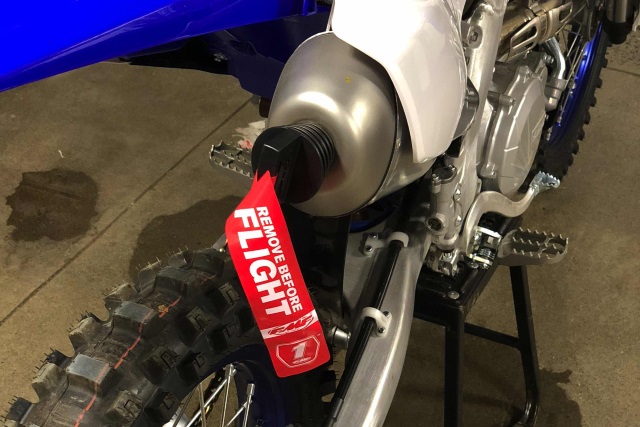
Flooding the engine means different things to different people. You can flood the engine by rolling the throttle prior to starting the motor - the most often used definition - or introducing just an incremental amount of water into the crankcase - the worst of the two "flooding" possibilities.
Some riders submerge their dirt bikes after misjudging a body of water or by getting to close and falling into a pond or other nearby pool. But the most common reason for water getting into the engine occurs when someone forgets to plug the tailpipe and/or doesn't use an airbox cover when washing the bike. Make no mistake, the first time you do this will be your last.
Any amount of water ruins the engine. Maybe not right away but water eventually rusts parts and leads to engine failure. The phrase "water and oil don't mix" isn't just a saying. Scientifically it's true the two substances don't mix. In many respects, a fully submerged bike makes for a better story and sometimes overall outcome because you know for sure and take the necessary countermeasures though that much water can ruin the electrical system and/or require a complete engine rebuild. Also, a submerged dirt bike probably occurs during riding which means a hot engine. Imagine the shock to internal parts once awash with cold water.
On the contrary, a small amount of water might not even affect performance or prevent the engine from starting your next time out. Unfortunately, no such test exists to determine whether a spray of the hose near the exhaust system or a wet airbox means water fully made its way into the engine. Resist the temptation to convince yourself that no water entered. You can take a chance - your call - but ideally you want to treat the possible intrusion of water just as you would an actual breach of the dam, e.g. riding into a pond. So, let's work on a fix...
Plug the tailpipe prior to washing your dirt bike!
Hopefully you haven't recently changed the oil. Thankfully, if you have, an oil change costs little compared to other routine maintenance. Bottom line - you will need to change the oil. But not yet.
Pull the spark plug (actually remove it) and turn the bike upside down so it rests on the handlebars and seat just like a pedal bike when you work on the tires or chain. Now kick the engine over. If you have an electric start this process just became a lot easier otherwise use your arm to kickstart (punchstart?) the engine. It helps having a friend nearby to assist in turning the bike upside down and steady the bike when you push on the kickstart. Don't worry, the bike won't start (no spark plug) when turning the engine over but do expect gas to leak out the vent hose.
Turning the engine over with the bike upside down helps push any water out of the top end. Yes, eventually, water in the top end trickles down to the bottom end where the oil rests, however, that's what you want to avoid. Even a slight water bath on metal parts can eventually cause rust. Once you have turned the engine over a few times, flip the bike back over on two-wheels. Now all the oil and whatever water remains rests in the bottom end. Drain and add fresh oil, and change the filter too.
Start the engine. You needn't cross your fingers like you would after a fully submerged bike. The engine will start unless you sprayed a lot more water inside the engine than willing to admit. In that case you probably have some electrical problems. But assuming the bike starts you have done what you can and hopefully won't have any rust issues in the future. At this point a second oil change probably won't do any good, but won't hurt either.
Lastly, check your maintenance calendar or hour meter. Consider a new top end, bottom end or both if you find the service life of parts close to retirement.
Like we said, the first time will be your last.









